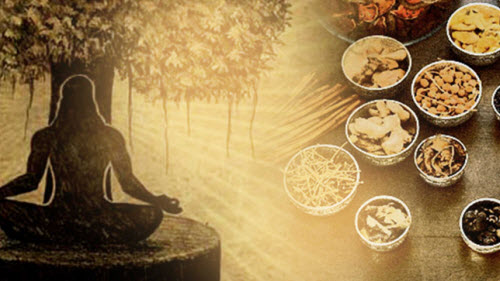 |
|
The 3 Doshas – Vata, Pitta, and Kapha, govern not only our own constitution, but everything else in the cosmos as well. So as per Ayurveda instead of winter, spring, summer, and fall, the year breaks into Vata season, which goes from late fall into early winter; Kapha season, from the coldest part of winter into spring; and Pitta season, which includes the hottest, longest days of the year—from late spring into early fall.
|
Vata Season
Leaf-scuttling winds mark the start of the Vata season, which Ayurveda characterizes as light, dry, rough, hard, mobile, irregular, cool, the very qualities we associate with late fall and early winter. The weather turns cold, winds blow, and the earth becomes dry, hard, rough maybe even a bit icy. Vata is the queen of change, so you’ll need to watch out for dry skin, irregular digestion, and the frenetic, unpredictable energy, which can easily leave you depleted, overwhelmed, and distracted by all the excitement. Here’s what you can do:
Stay away from raw, cold foods. Take extra care to keep your internal fire (agni) kindled. Eat warm, moist foods—think stews, soups, and root veggies—and save the salads and cold snacks for summer. Warm up with hot drinks. Cozy up to a warm fire or snuggle up with a good book, a cup of chai or hot tea, and a warm blanket. Warm milk laced with ghee and honey is a perfect nighttime elixir.
Stick to a routine. Make sure you schedule some alone time, restorative yoga, and meditation practices. Other daily ayurvedic practices (dinacharya)—including abyhanga, oiling the body with warming sesame oil—will help you stay steady and feel comforted.
|
Kapha Season
Kapha season extends from frigid winter days, when the ground freezes solid, to mud-luscious early spring, when the snow melts, the sap rises, and the first tentative shoots break through the ground. These conditions disturb Kapha Dosha’s heavy, dense, wet, gooey, stable, cool qualities. To pacify Kapha during the early part of this season:
Switch up your diet. Turn to foods that are lighter, drier, pungent, and warming. As soon as they’re available, eat the first bounty of the season, like sprouts, berries, dandelion and other spring greens, which naturally support this time of cleansing and stick to three meals a day to avoid overindulging.
Get moving. Do things that get you up and out of the house early. Get up before Kapha time (6 a.m. to 10 a.m.), and do some exercise like bike riding, walking, or other light aerobic activity before 10 a.m. This schedule will help you fend off seasonal weight gain.
Commit to a routine. Daily use of your tongue scraper, neti pot, and nasya oil will help with seasonal allergies and keep Kapha from building.
|
Pitta Season
Nature builds heat all through Pitta season until, at the start of autumn, the leaves on the trees turn bright orange, yellow, and red as if they were living flames on each branch. These leaves are lighter in nature, only slightly moist, intense, hot, sharp, and focused on their goal of transformation, just like Pitta Dosha. We can enjoy the passion of the season without burning up by following this advice:
Cool down. A daily sip or two of aloe vera juice will douse your internal heat. Summer’s bounty offers plenty of ways to keep cool, like cucumbers, mint, summer squash, zucchini, coconut juice, and mangoes. Avoid the heat of the day. Staying out of the sun during Pitta time (10 a.m. to 2 p.m.) helps keep your mental and emotional energy from overheating.
Make time to practice. Pitta types can become myopic and intense, so add a cooling breathing practice like sheetali pranayama to balance things out. Doing lateral yoga poses like janu shirshasana (head to knee pose) or utthita parshvakonasana (side angle pose) will dissipate the internal heat, and a rubdown with coconut oil will cool your skin.
|
Seasonal Detox
Did you know that your energy may be more easily disturbed during the weeks between the seasons? Consider doing a gentle detox to remove the buildup of elements from one season before moving into the next.
|
|
Disclaimer: All the information in this article has been researched from various sources as my personal study notes for future reference.
|